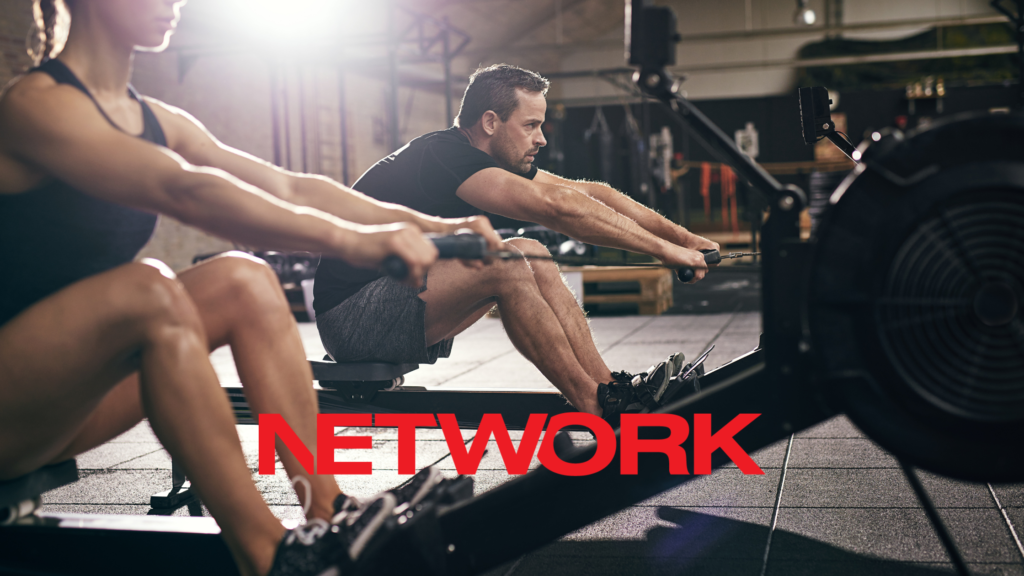The Fitness Zone

Maximizing Results with Minimal Time: The Power of Micro Workouts
Referred to as the “the new kid on the block”, micro workouts have gained recent popularity despite technically having been around for forever and a day! So what are they and why do we love them? Read on to find out.
Micro workouts are effective, short training sessions that include exercises performed in a high-intensity interval training format (HIIT). Unlike many traditional gym workout routines, micro workouts don’t take hours – instead, a mere 4-12 minutes is required to make decent progress towards your health and fitness goals.
There’s a wide range of micro workout routines available, depending on personal preference and access to equipment. A lover of weight training? Craving a cardio lift? Whatever your training needs, there’s likely a micro workout that will satisfy them.
The key to micro workouts is intensity. By focusing on short, high-intensity exercises, you can maximize your results in minimal time. For example, you can perform a series of barbell complexes with minimal rest, or engage in repeated hill sprints for a challenging and invigorating workout. Additionally, research has shown that HIIT workouts like micro workouts can lead to improved cardiovascular health, increased endurance, and better weight management [2]. Whether you’re a busy professional, a parent with limited time, or just someone who wants to keep fit with minimal time investment, micro workouts are a convenient, effective, and time-efficient way to boost your fitness.
Some fan favourites when it comes to micro workouts include:
- Tabata Training: 20 seconds work, 10 seconds rest, 8 rounds. Complete 3-4 times.
- 1-min HIIT Intervals: 20 seconds work, 40 seconds rest; OR 30 seconds work, 30 seconds rest. Always work off a 1 minute round.
- Resistance Training Complexes: a series of movements with a barbell, dumbbells or kettlebells performed one after the other. Minimal rest is prescribed between rounds.
Why are Micro Workouts Gaining Popularity?
The rise in popularity of micro workouts can be attributed to several factors. Firstly, the COVID-19 pandemic has led to a change in how we approach fitness, with more people looking for ways to exercise at home and minimize their exposure to public spaces. Micro workouts, which often require minimal equipment and can be done in a small space, fit this need perfectly.
In today’s fast-paced society, time is a precious commodity. Micro workouts are designed for people who have limited time but still want to stay fit and healthy. By delivering intense, effective workouts in short bursts, they allow individuals to maximize their results in minimal time, making them a popular choice for those who are always on the go.
Additionally, micro workouts can be used as a supplement to an individual’s traditional workout routine. They can provide a challenging and invigorating conditioning block at the end of a strength training session, for example. This is a great option for those who want to increase their heart rate but may not enjoy longer periods of cardio or conditioning. By combining their traditional strength routine with a quick 8-minute micro workout, they can achieve both their strength and cardiovascular goals in one comprehensive workout session.
Is it Effective, and Why?
The efficiency and effectiveness of micro workouts for burning calories can be attributed to their high-intensity nature [2]. When we engage in physical activity at a high intensity, our body is put under stress and requires more oxygen than the amount our muscles can supply. This shift to anaerobic metabolism, where the body starts producing energy without the aid of oxygen, results in a higher calorie burn during the workout and also has a lasting impact on the number of calories burned post-workout [3].
When we are working anaerobically we burn calories at an extremely high rate which is great for fat loss, so much so that it has been shown that often individuals will burn the same, if not more, calories in a 10-15 minute high-intensity workout compared to a 45-minute light-moderate intensity session [3]. This is due to the increase in heart rate and energy expenditure during the high-intensity workout. After the session, the body continues to burn calories as it works to repay the oxygen debt created during the workout, known as Exercise Post Oxygen Consumption (EPOC) [4]. EPOC results in an elevated heart rate and increased caloric expenditure for up to 24 hours after the workout, meaning that individuals continue to burn more calories even after the session is over [4].
Micro workouts not only offer immediate benefits during the session but also have long-lasting effects that can contribute to overall fitness and fat loss goals. By training at a high intensity, we push our body to work at a level where the oxygen demand exceeds the amount of oxygen our muscles can supply, forcing it to switch to anaerobic metabolism to produce energy. This different energy system creates an oxygen debt that must be repaid through the process of EPOC, resulting in a higher heart rate and increased caloric expenditure for up to 24 hours after the workout.
The long-lasting calorie burn from micro workouts makes them an efficient and effective way to increase daily caloric expenditure and contribute to overall fat loss and fitness goals. Whether short on time or simply wanting a quick and efficient workout, micro workouts offer both immediate and long-lasting benefits that can have a significant impact on overall health and fitness.
What Are Some Examples of a Micro Workout?
One of the great things about micro workouts is that they can be tailored to suit individual fitness goals and can be performed anywhere and at any time. Whether you’re looking to boost your cardiovascular health, build strength, or simply maintain a healthy lifestyle, there are a variety of micro workouts you can choose from to reach your fitness goals.
Here are some examples of micro workouts:
1.This first session is a Tabata session and can be performed at home or at the gym with minimal equipment. All you will need is a skipping rope, a box/step and some space.
Tabata Session: 20 seconds work, 10 seconds rest, 2 rounds (4 min)
- Burpees
- Rest
- Kick-Sits
- Rest
- Step-Ups
- Rest
- Skipping
- Rest
After the first four-minute block, take a 1-min rest and repeat 2-3 times.
2. The second session is an all-out cardio fest, with repeated intervals on your chosen piece of cardio equipment. You will need access to a gym for this one unless you have this equipment at home. If you are one to get bored with one piece of equipment, feel free to mix it up after round one.
HIIT Intervals: 30 seconds work, 30 seconds rest, 6 rounds (6 min)
Your choice of:
- Assault Bike
- Row Ergometer
- Ski Ergometer
- Spin Bike
After the first six-minute block, take a 2-min rest and repeat again.
3. The third and final session will require a kettlebell. Ensure not to pick a kettlebell with too much weight, as the accumulative effect of this complex will build as the set goes on.
Kettlebell Complex: Complete 6 reps of each without rest in between (i.e. transition from one movement to the next)
- KB Bent-Over Row
- KB Swing
- KB Clean
- KB Squat
- KB Push Press
The Takeaway
In conclusion, micro workouts are a convenient, efficient, and effective way to stay fit and healthy. These short, high-intensity exercises are designed for people who have limited time and want to maximize their results in minimal time. The high-intensity nature of micro workouts contributes to their efficiency, as they help you burn calories at an extremely high rate, resulting in an elevated heart rate and increased caloric expenditure for up to 24 hours after the workout. With a wide range of micro workout options available, there is something for everyone, regardless of your preferences and resources.
The COVID-19 pandemic has led to a change in how people approach fitness, with more people looking for ways to exercise at home, and micro workouts, which often require minimal equipment and can be done in a small space, fit this need perfectly. The efficiency and effectiveness of micro workouts make them a popular choice for those who are always on the go and are looking for a quick and efficient way to stay fit and healthy.
REFERENCES
[1] Plan, F. M. Micro Workouts For Women: Is This The Future of Fitness?.
[2] Shiraev, T., & Barclay, G. (2012). Evidence based exercise: Clinical benefits of high intensity interval training. Australian family physician, 41(12), 960-962.
[3] Kilpatrick, M. W., Jung, M. E., & Little, J. P. (2014). High-intensity interval training: A review of physiological and psychological responses. ACSM’s Health & Fitness Journal, 18(5), 11-16.
[4] Moniz, S. C., Islam, H., & Hazell, T. J. (2020). Mechanistic and methodological perspectives on the impact of intense interval training on post‐exercise metabolism. Scandinavian Journal of Medicine & Science in Sports, 30(4), 638-651.
Read more articles
Disclaimer: Where Certificate III in Fitness, Cert III/Cert 3, or Fitness Coach is mentioned, it refers to SIS30321 Certificate III in Fitness. Where Certificate IV in Fitness, Cert IV/Cert 4, or Personal Trainer is mentioned, it refers to SIS40221 Certificate IV in Fitness. Where Master Trainer Program™ is mentioned, it refers to Fitness Essentials and SIS40221 Certificate IV in Fitness. Where Master Trainer Plus+ Program™ is mentioned, it refers to SIS30321 Certificate III in Fitness and SIS40221 Certificate IV in Fitness. Where Certificate IV in Massage or Cert IV/Cert 4 is mentioned, it refers to HLT42021 Certificate IV in Massage Therapy. Where Diploma of Remedial Massage is mentioned, it refers to HLT52021 Diploma of Remedial Massage.











